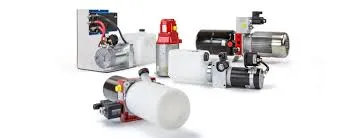Sep . 30, 2024 05:41 Back to list
Hand Operated Hydraulic Cylinder for Efficient Manual Control and Heavy Lifting Applications
Hand-Operated Hydraulic Cylinders A Versatile Solution for Various Applications
Hand-operated hydraulic cylinders have emerged as a vital tool for many industries, providing an efficient solution for lifting and moving heavy loads with minimal effort. These cylinders utilize the principles of hydraulics to amplify force, making them an invaluable resource in construction, automotive repair, manufacturing, and even agricultural applications. In this article, we will explore the functionality, advantages, and varied uses of hand-operated hydraulic cylinders.
How Hand-Operated Hydraulic Cylinders Work
At the core of a hand-operated hydraulic cylinder is the fundamental principle of Pascal's Law, which states that when pressure is applied to a confined fluid, that pressure is transmitted undiminished throughout the fluid. In this case, the hand-operated feature allows the user to generate hydraulic pressure through manual pumping, typically using a lever or a foot pedal, to lift or move objects.
A typical hydraulic cylinder consists of a cylinder barrel, a piston, and hydraulic fluid. When the user pumps the handle, it pushes the hydraulic fluid into the cylinder, causing the piston to move. The size of the cylinder and the piston area determines the lifting capacity—the larger the diameter, the greater the lifting force. This design enables operators to lift heavy loads smoothly and efficiently, with the ability to control the speed of descent by adjusting the release valve.
Advantages of Hand-Operated Hydraulic Cylinders
One of the primary advantages of hand-operated hydraulic cylinders is their portability. Unlike electric or pneumatic systems, which require a constant power source, these hydraulic cylinders can be operated in remote locations or in settings where electricity is not readily available. This feature makes them ideal for outdoor construction sites or emergency situations.
Additionally, hand-operated hydraulic cylinders are relatively simple to use. With just a few pumps of the handle, users can generate significant lifting force without extensive training or expertise. This ease of use allows operators to maximize productivity and efficiency during their tasks.
Another significant benefit is the cost-effectiveness of hand-operated hydraulic systems. These units often have lower initial costs compared to their powered counterparts and require less maintenance due to fewer moving parts. Their robust design ensures longevity, reducing the need for frequent replacements and repairs.
hand operated hydraulic cylinder product

Applications of Hand-Operated Hydraulic Cylinders
The versatility of hand-operated hydraulic cylinders is one of their defining features. They have found applications in various fields, including
1. Construction Used for lifting heavy beams, repositioning scaffolding, or heaving materials during projects. 2. Automotive Repair Ideal for lifting vehicles, accessing hard-to-reach areas, or supporting equipment during repairs.
3. Manufacturing Employed in assembly lines to move large components or in presses for shaping materials.
4. Agriculture Assisting in the maintenance of machinery or lifting heavy loads when working with farm equipment.
5. Marine and Aviation Used in docking operations or for lifting components in aircraft maintenance.
Conclusion
Hand-operated hydraulic cylinders provide a practical and efficient lifting solution across multiple industries. Their straightforward operation, portability, and cost-effectiveness make them an essential tool for professionals and DIY enthusiasts alike. As industries continue to seek innovative solutions to streamline operations and enhance productivity, the demand for these versatile hydraulic systems is expected to grow. Understanding their functionality and applications will allow users to harness their full potential, ensuring safe and efficient handling of heavy loads in any setting. Whether in a workshop or a construction site, hand-operated hydraulic cylinders undoubtedly play a crucial role in modern operations.
-
Fork Lift Power Units - Hebei Shenghan | Efficiency, Reliability
NewsJul.13,2025
-
1.5-Ton Turbocharged Cylinder-Hebei Shenghan|Hydraulic Solution,Energy Efficiency
NewsJul.13,2025
-
Auto Hoist Power Units-Hebei Shenghan|Efficiency&Industrial Lifting
NewsJul.13,2025
-
Double Acting Power Units-Hebei Shenghan|Hydraulic Solutions,Industrial Efficiency
NewsJul.13,2025
-
1.5 Ton Lifting Cylinder 70/82-40-290-535 - High-Performance Hydraulic Solution | Hebei Shenghan
NewsJul.13,2025
-
Fork Lift Power Units - Hebei Shenghan | Efficiency&Reliability
NewsJul.13,2025
